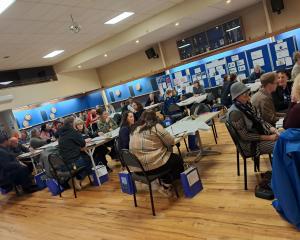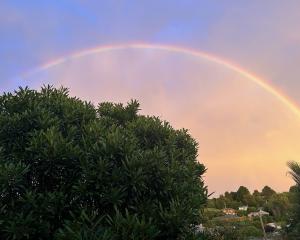
I write on behalf of the NZ Chapter of the Illuminating Engineering Society of Australia and New Zealand (IESANZ) in response to the article 'Science can inform better lighting decisions' in your newspaper on November 7.
As a society we are an organisation of people that aim to advance the art and science of illumination, and dissemination of knowledge to all interested parties.
We are concerned reading your article that you confuse and mis-inform your readers in almost all of the many subject areas you cover, while missing the balance that a well-researched article could provide. This letter does not attempt to rebut your article as that would miss the opportunity to make more important points, covered below.
This represents a critical time for outdoor lighting with new discoveries and technological developments providing a unique opportunity for central and local government to make scientifically informed outdoor lighting policy decisions that could affect our lives for decades to come. Your article identifies some of the issues but confuses the point of them and ignores other more critical issues.
Like almost everything, a beneficial action or policy also has a detrimental effect, and all human endeavours – especially those like public lighting that are financed by public taxes, rates or transport levies – need to balance these beneficial effects against the detrimental effects to ensure that the net effect is desirable for the general public, for most of the time at least cost.
LED lighting and the Internet of Things (IoT) together with substantial knowledge have provided New Zealand (and the world) with an opportunity to make new public lighting infrastructure decisions that go far further in its effect than lighting at night to provide pedestrians and vehicles with added safety and security. That is why we strongly support the title of your published article.
The road user safety and security effect that public lighting provides are the reason for providing lighting in the first instance. As your article identifies, much more is now known about lighting’s effects on the ecology of our environment, human health and visibility of the stars at night (referred to as the “dark sky”).
Robust research has shown that lighting the right place at the right time, to the right level substantially reduces injuries and fatalities, has an effect on crime (surprisingly sometime the opposite effect to the intuitive one), and can positively affect mood and comfort of people.
While the blue component of light is one that both humans and wildlife are most sensitive to, we also note that it is not the only component that influences circadian rhythms etc, and these effects are proportional to the amount of light that we receive from our environment. We also note that the blue lighting effects have been with public lighting for quite some time and are not new or unique to LEDs.
The scientific balancing of these effects is complex. For example, the whiter the light the better it is to keep humans alert for dangerous activities like driving. On the other hand, the “warmer” or yellower the light, the better it is to allow humans to sleep and not disturb the ecology or the visibility of the night sky.
What is not mentioned is the high dosage values required to influence sleep and disturb the ecology. Your article refers to the American Medical Association’s (AMA) announcement of June this year, which has been widely and badly misquoted. The AMA’s original report needs to be referenced and even they got some things wrong as identified by world experts.
LED lighting can direct light on to the task area exceptionally well, and limit the spill light that is typical of the older technologies that you are suggesting are retained. In this way, LED lighting is much more efficient, and by nature of the solid state technology, requires less than 50% of the cost to maintain in comparison to those technologies that it replaces.
Furthermore, it can be dimmed or instantly switched off, it has no toxic mercury inside the lamps to find its way into landfills, and manufacturers can make LEDS with many more shades of colour (including “dark sky” friendly ones).
These are all factors that should be (and are currently being considered by DCC) in any scientifically informed lighting.
Implementation of effective lighting control systems is providing the ability to trade off these positive and negative effects.
LEDs and controls make this cost effective for the first time in history – to turn lighting on only when it’s really needed (during periods of the night when there is lots of traffic) and dimming light levels when traffic levels are much reduced. For example, Auckland Transport is leading the way by installing such controlled, efficient street lighting.
By nature of their sheer numbers, the lighting control system could then very cost-effectively become the platform for a number of other sensors important for enabling “smart city” devices.
We would be delighted if the above were published to dispel some of the misperceptions that your November 7 article provided.
- Greg Williams, NZ Chapter President, Illuminating Engineering Society of Australia and New Zealand












